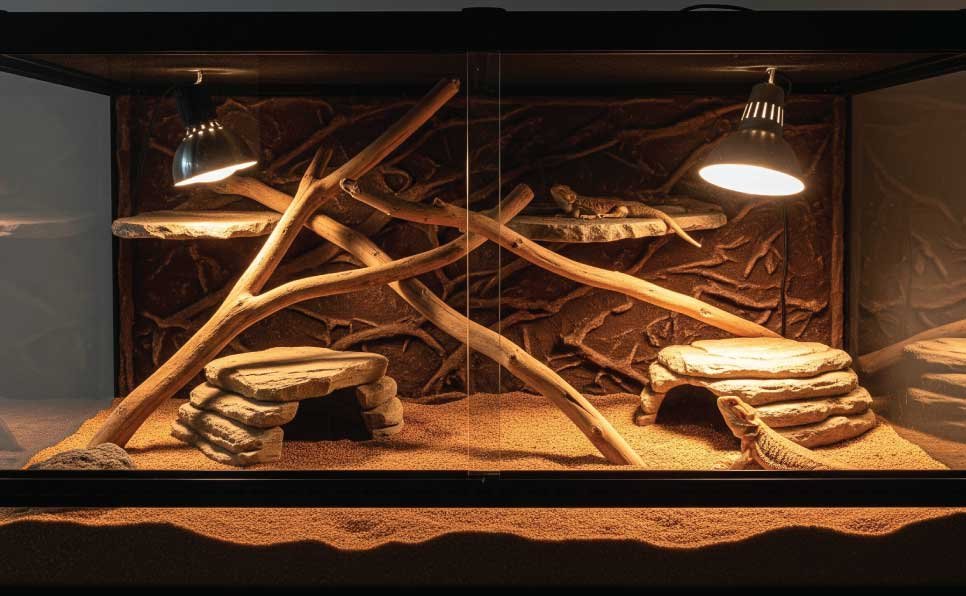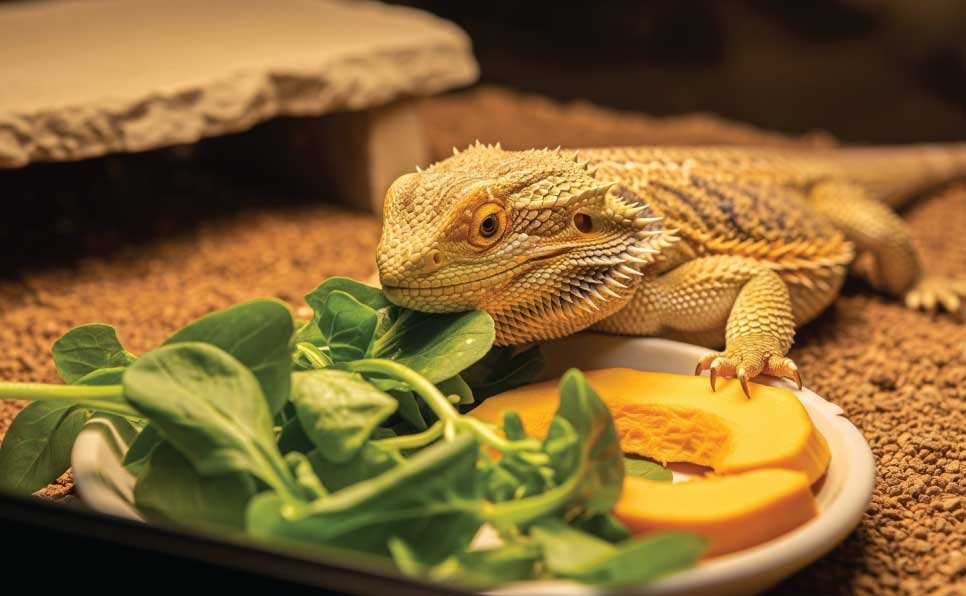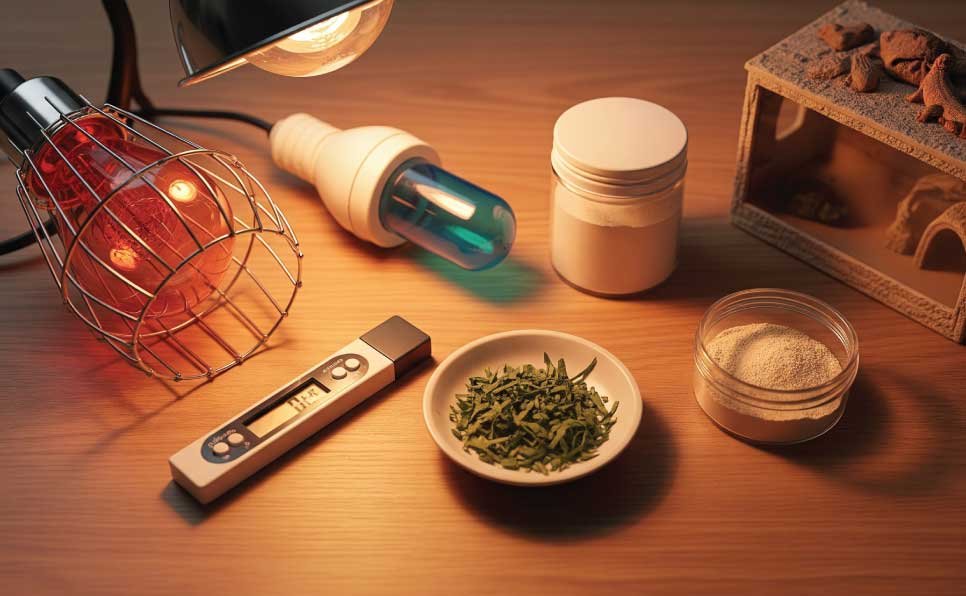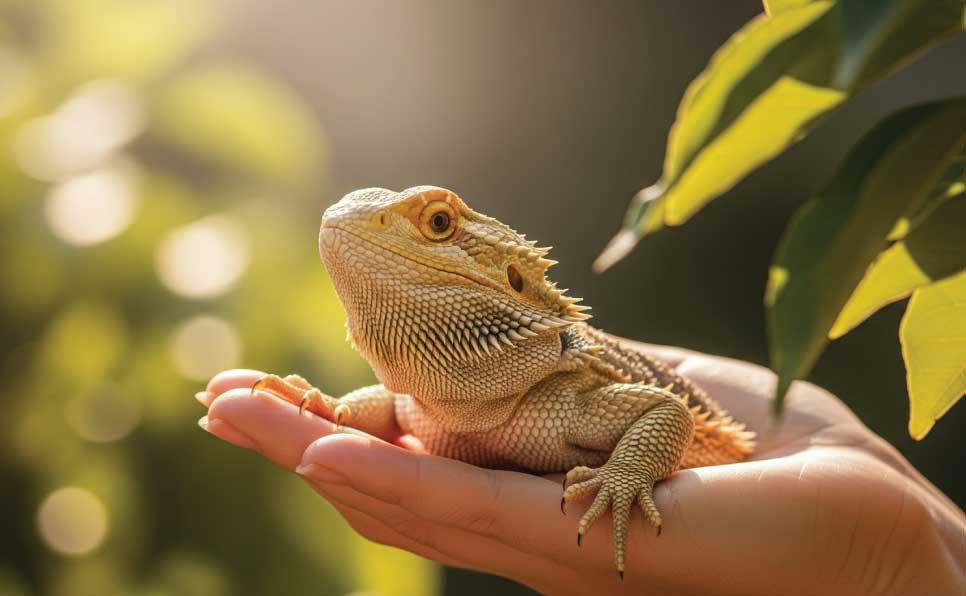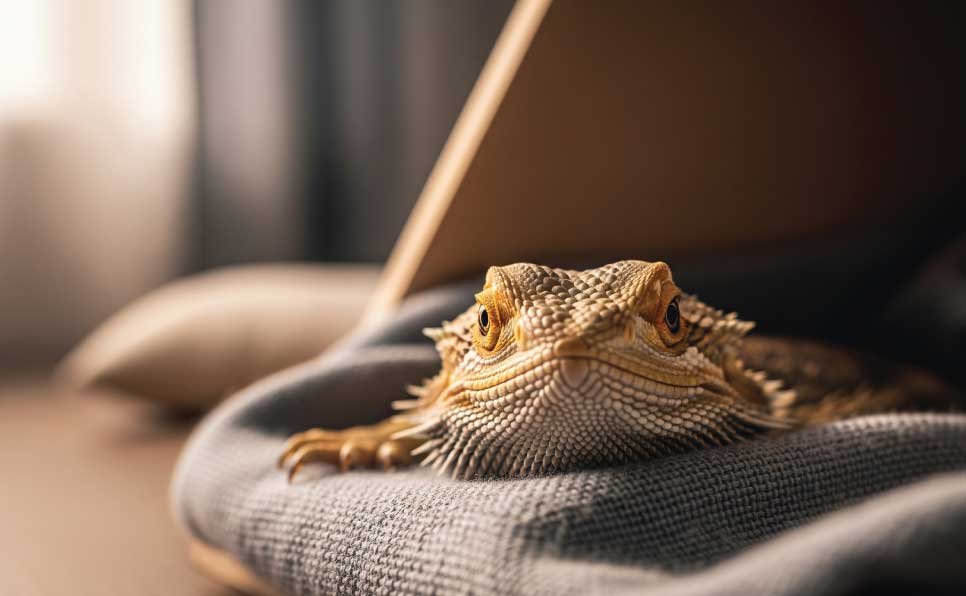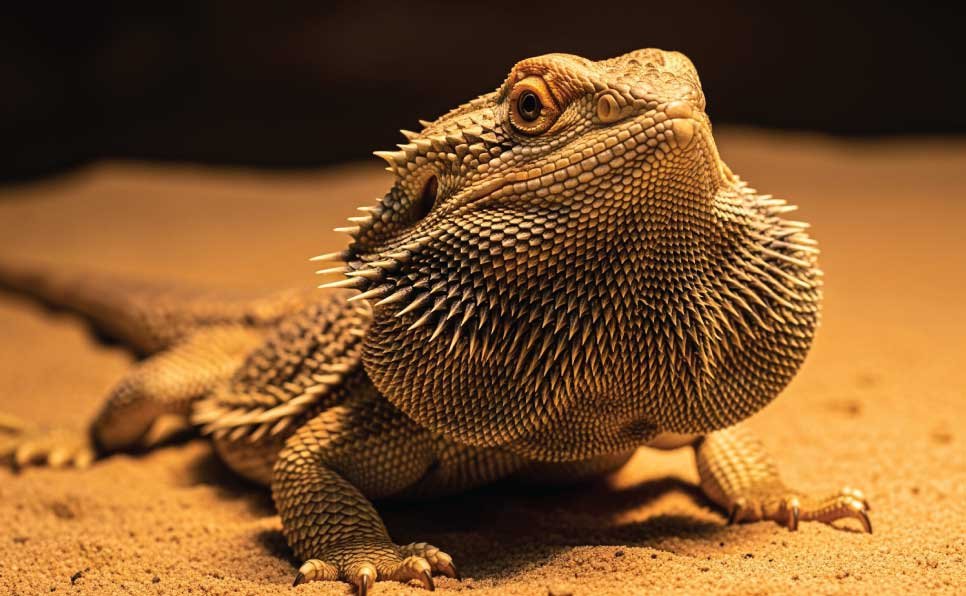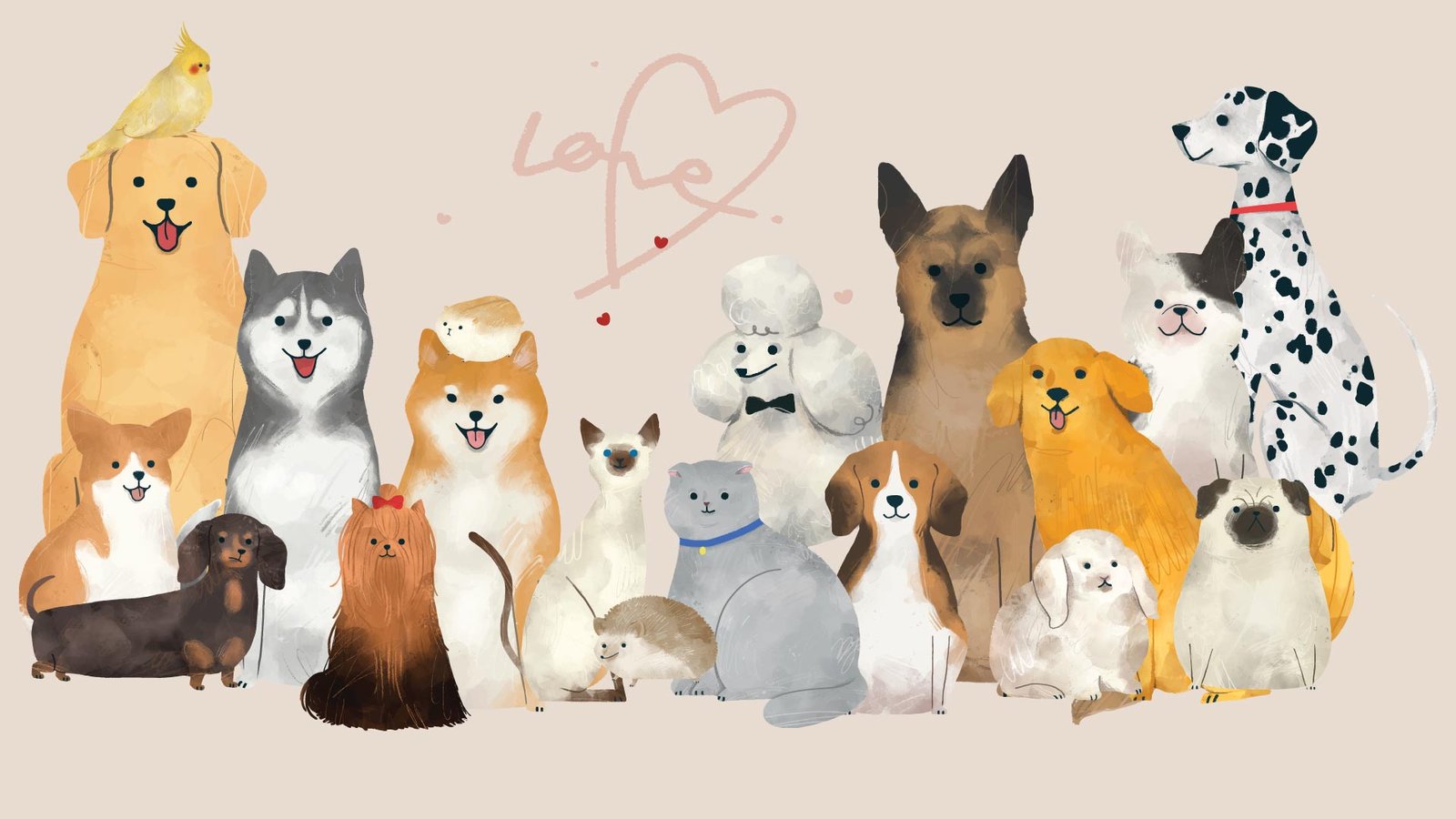I never thought I’d become a reptile person. When my friend Sarah got sick and asked if I could watch her bearded dragon for “just a few weeks,” I honestly had no idea what I was signing up for. I mean, I’d had dogs and cats my whole life, but a lizard? That felt like stepping into completely uncharted territory.
But there I was, standing in Sarah’s living room, staring at this curious little creature named Spike who was tilting his head at me like he was trying to figure out if we were going to be friends. What started as a favor for a friend in need turned into one of the most eye-opening experiences I’ve ever had – and completely changed how I think about what makes a great pet.
If you’re wondering whether a bearded dragon might be right for you, I want to share everything I learned during those months with Spike. Because here’s the thing: they’re not hard to care for once you understand what they need, but they’re definitely different from any other pet you’ve probably had.
Listen to the Podcast: Are Bearded Dragons good Pets?
Getting to Know Your Bearded Dragon’s Personality
The first thing that surprised me about Spike was how much personality he had packed into that little lizard body. I’d expected him to just… sit there. But within the first few days, I realized he was actually watching me as much as I was watching him. I was thinking how could I care of a Bearded Dragon?
When I’d come home from work, Spike would do this adorable head-bobbing thing that I swear was his way of saying hello. And when he was content, he’d slowly blink at me, like the world’s most zen little meditation master. But when something stressed him out (like when I accidentally knocked over a book too close to his tank), his beard would puff out and turn jet black. The first time that happened, I panicked and called Sarah thinking something was terribly wrong. She just laughed and said, “That’s his way of saying ‘whoa there, buddy, give me some space.'”
Learning to read Spike’s body language became like learning a new language. When he’d wave his little arm at me and I’m not kidding, it looked exactly like he was waving, I learned that was his polite way of saying “I see you, but I’m not looking for trouble.” And the glass surfing? That frantic climbing up and down the walls of his tank? That usually meant he was either bored or wanted some time outside his enclosure.
The more I paid attention, the more I realized that Spike had his own daily routine and preferences. He had a favorite basking spot, a preferred hide for afternoon naps, and he definitely had opinions about his food (more on that later). It was like living with a very small, very quiet roommate who had some pretty specific needs.
Creating the Perfect Home for Your Dragon
Setting up Spike’s living space was probably the most overwhelming part of the whole experience. Sarah had left me detailed instructions, but seeing it all written out made it look like I was setting up a small apartment for a very particular tenant.
The tank itself was bigger than I’d expected – 75 gallons – and it took up a good chunk of my living room. But I quickly understood why bearded dragons need so much space. These aren’t creatures that just sit in one spot all day. Spike loved to explore, climb on his driftwood branch (which he claimed as his personal throne), and patrol his territory like a tiny dragon king.
Getting the temperature right was my first real challenge. I thought one heat lamp would do the trick, but bearded dragons need what’s basically a weather gradient in their tank. One side needed to be desert-hot – around 100°F for Spike’s morning sunbathing sessions – while the other side stayed cooler at about 80°F for when he wanted to chill out. At night, I could let the whole tank cool down to around 65°F.
The lighting situation was more complex than I’d expected too. Beyond the heat lamp, Spike needed a special UVB light that helps him process calcium and stay healthy. I learned this the hard way when I forgot to replace the bulb after six months and noticed Spike seemed less active and wasn’t eating as enthusiastically. A quick vet visit and a new bulb later, and he was back to his usual energetic self.
One thing I really didn’t anticipate was how much I’d enjoy the daily tank maintenance. Every morning, I’d do a quick check of his temperatures and lights, clean up any messes, and refresh his water. It became this peaceful little ritual that helped me start my day. And once a week, I’d give his whole setup a deeper clean while he explored in a safe playpen I’d set up. He’d watch me scrub his tank like a tiny supervisor, which honestly made the whole process pretty entertaining.
Figuring Out the Food Situation
Feeding Spike was probably my biggest learning curve. I’d fed plenty of dogs and cats in my life, but tossing live crickets into a tank? That was definitely new territory for me.
The first time I had to feed him crickets, I’ll admit I was a little squeamish. But watching Spike’s hunting instincts kick in was actually fascinating. He’d go from lazy sunbather to focused predator in seconds, stalking his prey with surprising speed and precision. It was like watching a tiny prehistoric creature in action.
What really threw me off was learning that bearded dragon diets change as they age. Spike was a full-grown adult, so he needed mostly vegetables with insects as more of a side dish. But I had to read up on what younger dragons need because I was curious – and it turns out baby beardies need the opposite ratio, with mostly insects and fewer veggies.
I started preparing Spike’s salads like I was meal-prepping for a very small, very particular vegetarian. Collard greens, mustard greens, butternut squash, and bell peppers became regular items on my grocery list. He had definite preferences too – he’d gobble up the squash first and leave the greens for later, like a kid eating dessert before dinner.
The supplement situation was another learning curve. I had to dust his insects with calcium powder a few times a week, plus add a multivitamin once or twice a week. It felt like I was running a tiny pharmacy, but I could see how much better Spike looked and acted when he was getting proper nutrition.
One mistake I made early on was giving him too many treats. Spike had a serious sweet tooth for fruits, but I learned they’re basically candy for bearded dragons – fine occasionally, but not something to overdo. I also had to cut back on the fatty insects like mealworms when I noticed Spike was getting a little round around the middle.
The Real Talk About Time and Money
Before taking care of Spike, I never really thought about the financial commitment of reptile ownership. The ongoing costs weren’t too bad – maybe $20-30 a month for food and supplies, but the initial setup was definitely an investment. Between the tank, lighting, heating, decorations, and all the little necessities, we’re talking several hundred dollars to do it right.
The daily care wasn’t overwhelming, but it was consistent. Every single day, Spike needed fresh vegetables, a temperature check, and a clean environment. It probably took me 15-20 minutes each morning, but it wasn’t the kind of thing I could skip if I wasn’t in the mood.
What I didn’t budget for initially was vet care. Finding a reptile veterinarian took some research, and the visits cost more than I expected. But when Spike had a minor skin irritation from substrate that was a bit too dusty, I was grateful to have a professional who knew exactly what to look for and how to treat it.
The time commitment was probably the most surprising aspect. Not because it was overwhelming, but because I found myself genuinely enjoying the routine. Watching Spike’s daily patterns, seeing him respond to changes in his environment, and just spending quiet time near his tank became unexpectedly relaxing.
Is a Bearded Dragon Right for Your Life?
After several months of being Spike’s temporary guardian, I realized that bearded dragons make amazing pets, but only if their needs match your lifestyle and expectations.
They’re perfect if you want a pet that’s interactive but not demanding. Spike would acknowledge me when I came home, seemed to enjoy supervised exploration time outside his tank, and had enough personality to keep things interesting. But he was also content to spend hours just basking under his heat lamp, which made him a much more low-key companion than a dog or cat.
However, they’re not the right choice if you’re looking for a cuddly pet or if you travel frequently. Bearded dragons need consistent daily care, and finding someone who can properly look after them while you’re away can be challenging. And if the idea of handling live insects makes you uncomfortable, that’s definitely something to consider.
The financial commitment is real too. Beyond the setup costs, you need to budget for quality food, regular vet checkups, and equipment replacement. It’s not huge compared to other pets, but it’s steady.
What struck me most about the experience was how many bearded dragons and other reptiles end up needing new homes when their owners’ circumstances change. Sarah’s situation made me realize how valuable foster care can be in the reptile community. If you’re not ready for a full-time commitment but want to help, fostering can be an incredible way to make a difference.
The Unexpected Gift
When Sarah recovered enough to take Spike back, I was surprised by how attached I’d become to that little guy. Those months taught me so much about patience, observation, and the quiet satisfaction of providing excellent care for a creature who depends on you completely.
Spike showed me that companionship doesn’t always look like what we expect. He may not have greeted me at the door with a wagging tail, but his slow blinks, head tilts, and the way he’d position himself to watch me work were his own forms of affection. There’s something deeply peaceful about sharing space with an animal that’s so in tune with its environment and routines.
If you’re considering a bearded dragon, I’d encourage you to think about whether you’re drawn to the idea of really understanding and caring for a creature that operates so differently from us. They require knowledge, consistency, and patience – but they offer a uniquely rewarding relationship in return.
And if you’re not quite ready for full ownership but want to help, look into reptile rescue organizations in your area. There are so many Spikes out there waiting for someone to give them a safe place to land, even if it’s just temporary. You might just discover, like I did, that opening your heart to an unexpected companion can change you in ways you never saw coming.
Taking care of Spike didn’t just teach me about bearded dragons, it taught me about the different ways we can connect with the animals who share our world. And honestly? I’m grateful for every minute of it.
How Challenging are Bearded Dragons as Pets? Frequently Asked Questions (FAQs)
Generally, no. Bearded dragons are solitary animals and can become territorial, especially as they grow. Housing two beardies together can lead to stress, injury, or one dragon dominating the other when it comes to food and basking spots. It’s best to provide each beardie with its own enclosure.
With proper care, a bearded dragon can live 8 to 12 years, and sometimes even longer. Lifespan depends on good nutrition, correct habitat setup, and regular vet care. Choosing to adopt or foster means making a long-term commitment, so it’s good to plan ahead.
Bearded dragons don’t get lonely in the way mammals like dogs or humans might. They don’t crave the company of other dragons, and most prefer having their own space. What they do enjoy is interaction with you! Many beardies bond with their people over time and seem to like gentle handling and your presence nearby.
Daily handling is great for socializing your beardie, helping them feel comfortable, and strengthening your bond. Just keep sessions short at first, especially if your dragon is new to your home. Gradually increase handling time as they get used to you, always watching for signs of stress.
There’s a lot of debate, but many keepers (including me) find that solid surfaces like reptile carpet, ceramic tiles, or paper towels are safest. Loose substrates like sand can pose an impaction risk if swallowed, especially for younger dragons.
Yes, with care! Bearded dragons often enjoy supervised time outdoors, especially in warm, sunny weather. Make sure it’s a safe space where they can’t escape or encounter predators, and always monitor the temperature - too hot or too cold can be dangerous.
Conclusion
So, how challenging are bearded dragons as pets? I’d say they’re like any meaningful relationship, what you put in is what you get out. Sure, they need a little setup, daily care, and attention to detail. But what they give back? It’s honestly magical. Spike taught me so much about patience, observation, and the quiet joy of connecting with a creature so different from me, yet so full of personality.
If you’re willing to learn and provide the right environment, a bearded dragon can be a sweet, calming presence in your life. And hey, if full-time ownership feels overwhelming right now, maybe consider fostering or adopting a beardie (or any small animal) who’s in need. You never know – the experience might change your heart like it did mine.
Ready to take the next step? Start planning your habitat, or check out local rescues to see if a bearded dragon is waiting for a home like yours. And if you’ve cared for a beardie before, I’d love to hear your stories in the comments! Let’s celebrate these amazing little companions together

